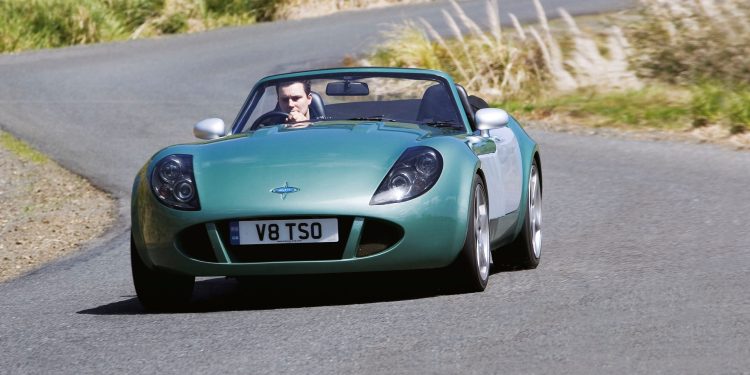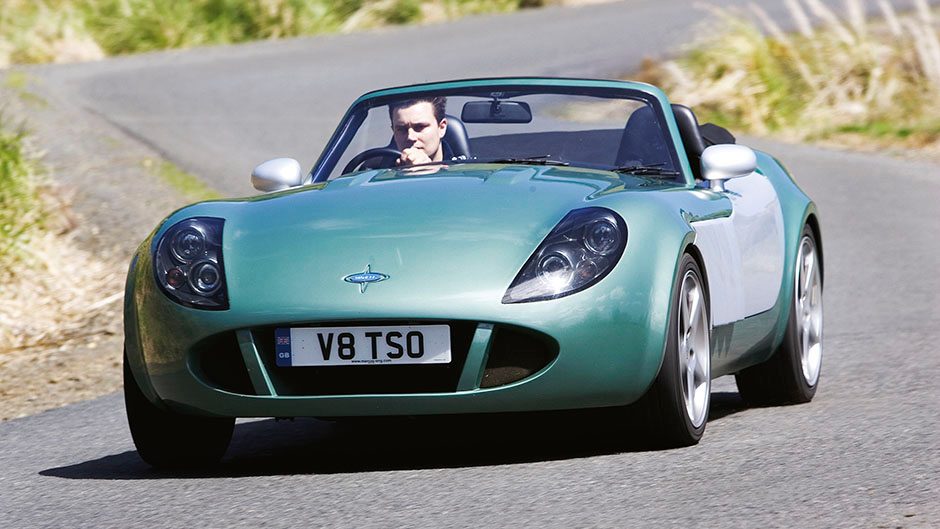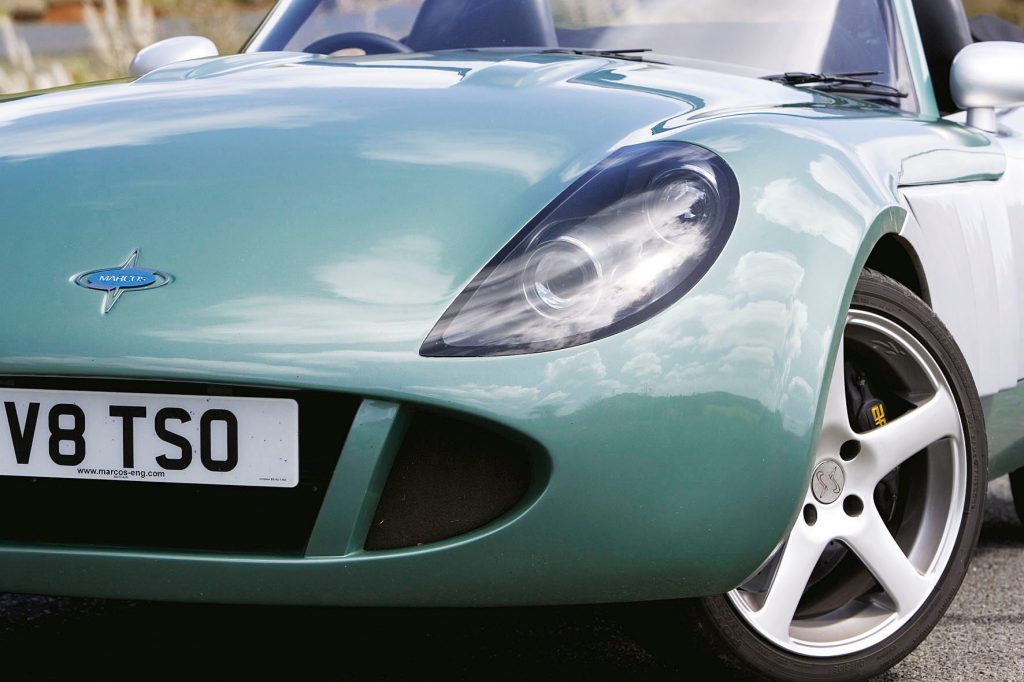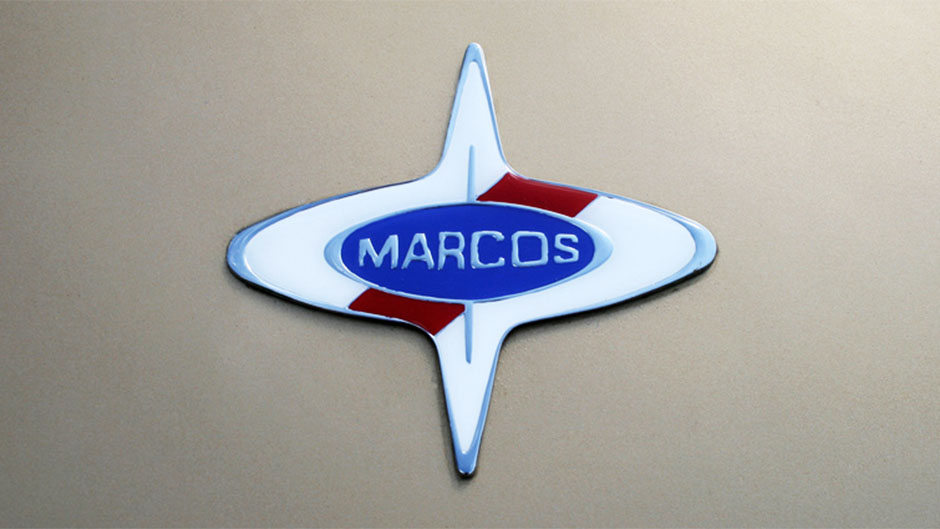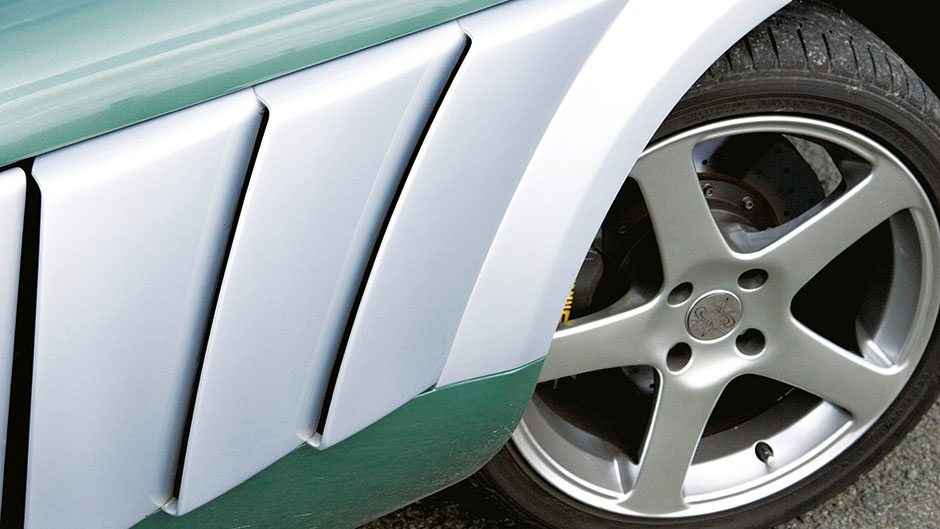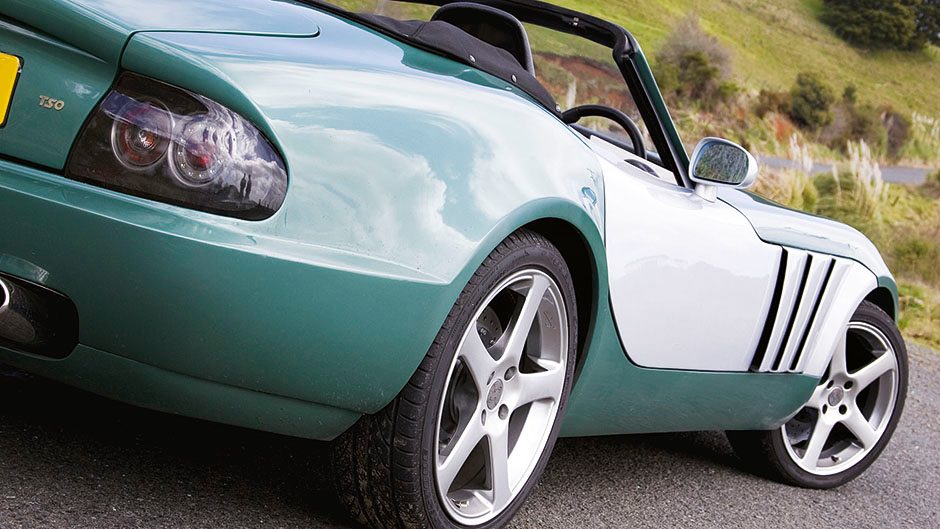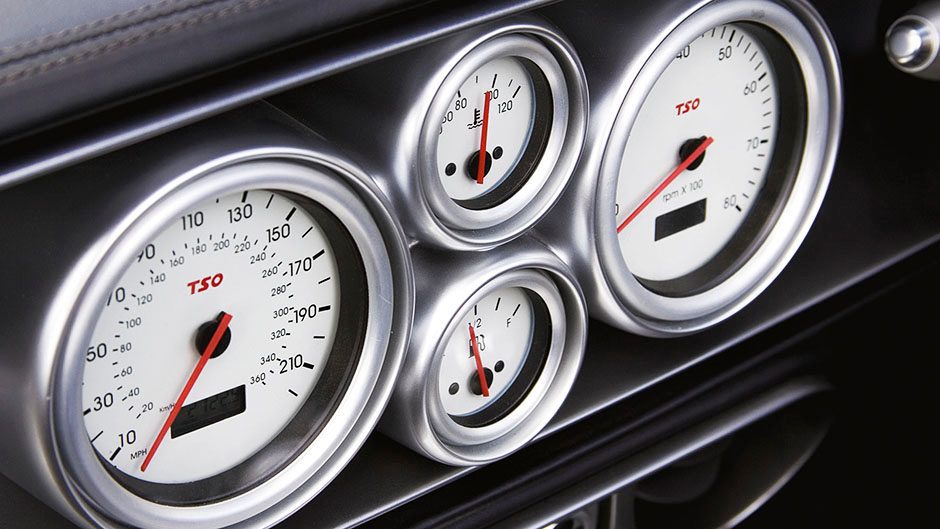2004 Marcos TSO R/T review
Words Kyle Cassidy | Photos Tom Gasnier
Take a high-performance corvette V8 engine, cover it with a lightweight fibreglass roadster body, and cage it with a tubular steel spaceframe, and you have the new Marcos TSO R/T.
It’s not often that a new Marcos comes along, and it’s a blue-moon event when one comes down to the furthest reaches of the old Empire; it’s simply not a nameplate we can expect to become familiar with in these parts. Established in the 1960s, this small British firm set about making GT racers and sports cars. Things have moved slowly at the company for the last few decades but now new Marcos Chairman and MD, Tony Stelliga, is keen to move the car maker on.
Enter the TSO, the first all-new car from Marcos in over 20 years – and all-new it certainly is. It has a new chassis and drivetrain, and a new development and design team using CAD technology, while the firm has moved to new facilities alongside new technical partner, Prodrive. Stelliga sees a gap in the market for a British roadster with American iron under the bonnet – or alloy in this case, as TVR has moved away from V8’s to develop its own, peaky six-cylinder engines that lack the low-down grunt.
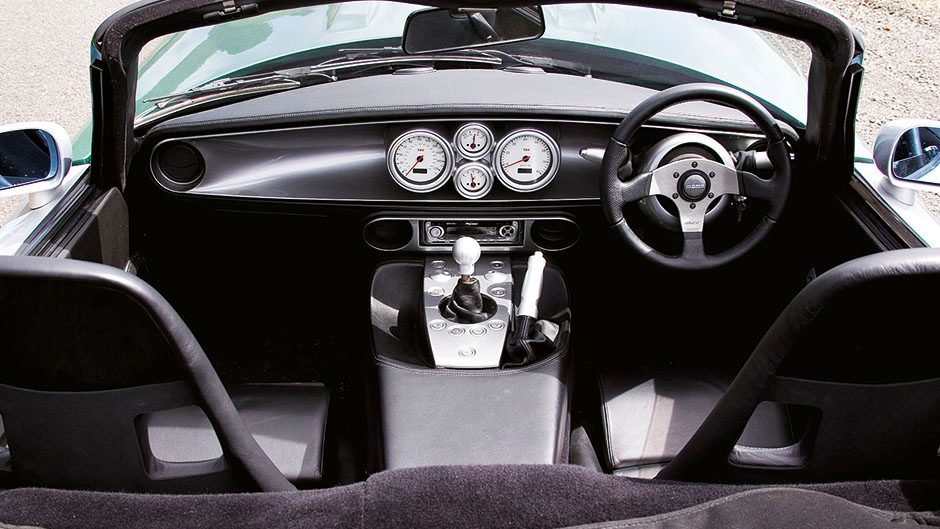
And the TSO R/T has no problem there with GM’s 5.7 litre LS1 V8 under the bonnet. Marcos wasn’t happy with the torque curve however, so it developed its own cam, engine management and breathing systems to generate more of the good stuff low down. The result is a motor that HSV would be very proud to call its own. Marcos hasn’t revealed the torque figures, but in the R/T, the engine produces 400bhp (298kW). Even as low as 1500rpm, the torque starts flowing, and it keeps making good power all the way through to its 6200rpm cut-out. The two air vents under the headlights feed cool air straight up to the throat of the V8, and at the other end, the growling exhaust barks and gurgles ferociously, with easily the best V8 note this side of an HRT race car.
The TSO sports a square tube spaceframe chassis fused to a GRP composite semi-monocoque body. The Marcos needs to be light without compromising body control, and on the scales it weighed 1183kg.
If you think the TSO looks a little TVR-like, that’s because Damien McTaggart, the man who penned the TVR Cerbera, Tuscan and T350, oversaw the design. It’s not hard to see the influences but it also has some Marcos trademarks mixed in, like the high boot line and long swooping bonnet.
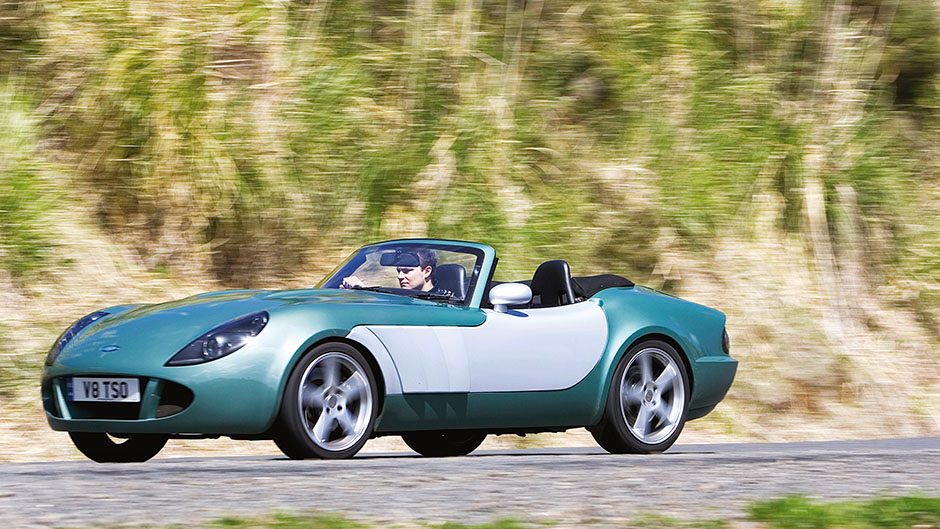
Prodrive obviously knows how to tune the handling. Utilising Mac struts at the front and double wishbones out back, each shock has its own outboard reservoir. The R/T sports reasonably stiff spring rates and carries a lot of bar to maintain body control. A large AP Racing brake package takes care of the stopping and there are no electronic hand-holders here. As you can imagine, it doesn’t take much to break traction in this thing, so best to tread carefully.
The Tremec T56 six-speed manual is used to process the power. It’s a tough gearbox, but slow between shifts and heavy in action. Borrowing the GM powertrain means there’s likely to be a four-speed auto version to come. Provided they get the shift calibration right, the auto box should marry up nicely to the nature of the TSO, a hairy-chested grunt machine.
The car we tested was a pre-production, prototype version on a brief world tour to gauge response from potential customers and media. Slipping behind the wheel, you sit low in the car, just in front of the rear wheels, peering over the long bonnet. The snug-fitting bucket seat has minimal adjustment, but moves forward and aft. The small, sporty steering wheel is great, as is the rest of the cockpit, from the alloy repeater stalks, the concave dash and the exquisite minor control buttons on the centre console. Included in the mix is a button for opening the doors. Even for a pre-production model, the finish and styling is far removed from a kit car. The gear lever is sited nicely, the clutch pedal is light-weighted, and the pedals themselves are proper drilled alloy items. The cockpit is cosy but not a squeeze, and opening the boot reveals a decent aperture, though the fuel tank robs much of the space.
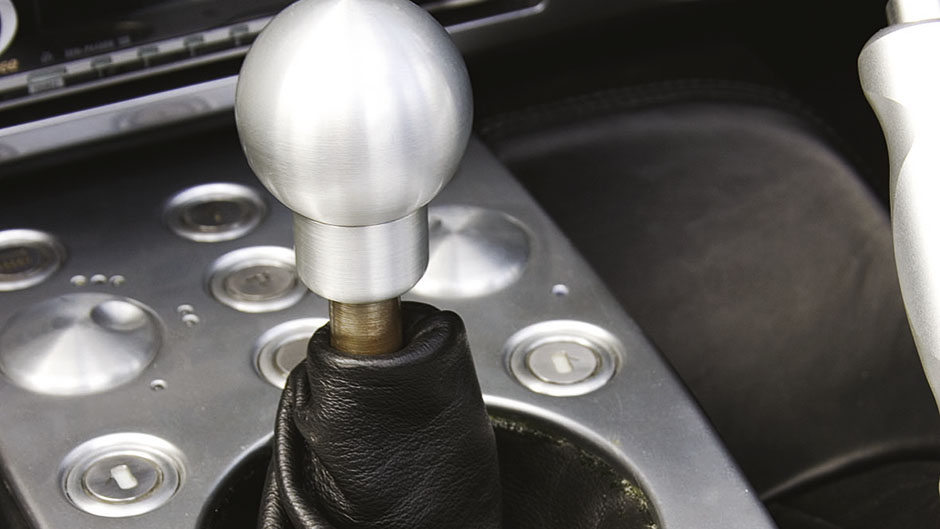
Unleashing the LS1’s 400 horsies for the first time is a real experience. Floor the throttle and you’re pushed back in your seat, the exhaust is roaring and you’re quickly on the wrong side of the speed limit. The Marcos is ferocious in a straight line, as demonstrated by its 80-120km/h time of just 2.2 seconds, which is quicker than the steroid-fed Dodge Viper. With the 0-100km/h stretch, clearly a sprint that is dependent on traction off the line, it’s better to launch conservatively and make time up further down the road. Without trying too hard and breaking the prototype car, we managed a 5.08s run.
The central instrumentation makes it hard to see the speedo, an important tool given the speeds the Marcos can quickly achieve. Turn-in is crisp and it isn’t prone to understeer but you’ve got to treat the throttle with caution as it’s easy to overwhelm the grip with the abundance of torque on tap. The car squats coming out of corners on the power before grunting down the straight. Body control could be more disciplined; the Marcos tends to lean in the corners before taking its set, but the ride is good while the cabin is shake-free over bumps.
There were a few gremlins that we’d like to see changed before the production-ready car comes along in March, 2005. The brake pedal had little feel – lock-up was achieved far too easily – and the steering was also very light, with over-assistance killing much of the road feel. The pedal box also needs some rearranging as the throttle is too far away from the brake. But there’s no problem with the power or the look.
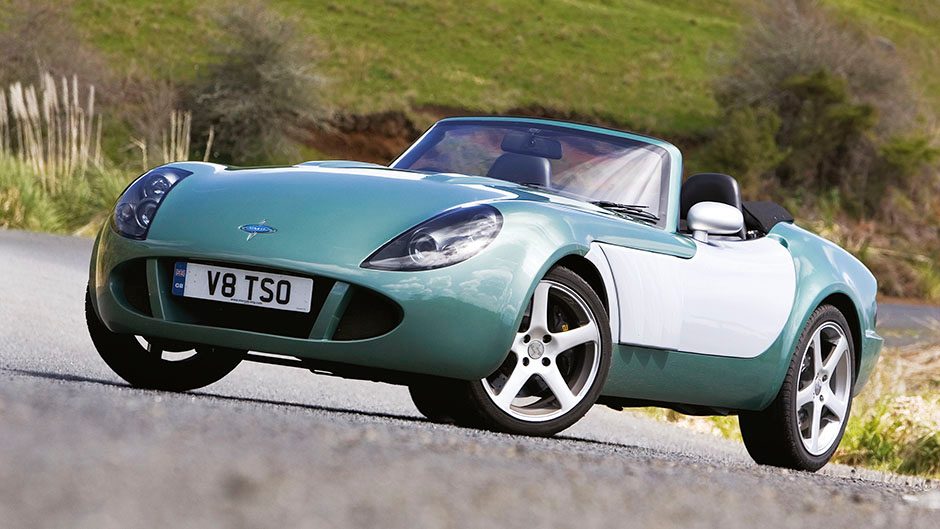
The production model will be well specified with an electrically adjustable pedal box, power windows, adjustable ride height, heated windscreen and stainless steel sports exhaust. Options to expect include a full leather interior, air conditioning, heated seats, adjustable dampers, LSD, an engine start button and lower diff ratios.
The final spec of the car for our market has yet to be decided but the importer, Roger Phillips, won’t be bothering with the standard 350bhp TSO, and will be selling the R/T for approximately $150,000. And as production of the TSO will break no records, exclusivity is assured. Stelliga hopes to have manufacture on stream by April, 2005, and will build 50 cars that year, followed by 90 to 100 in 2006. The finished product will be back here in March next year, and that’s something we look forward to driving again.
| Model | 2004 Marcos TSO R/T | Price | $150,000 |
| Engine | 5665cc, V8, EFI, 298kW/Nm | Drivetrain | 6-speed manual, rear-wheel drive |
| Fuel Use | XL/100km | C02 Output | Xg/km |
| 0-100km/h | 5.08sec | Weight | 1183kg |


